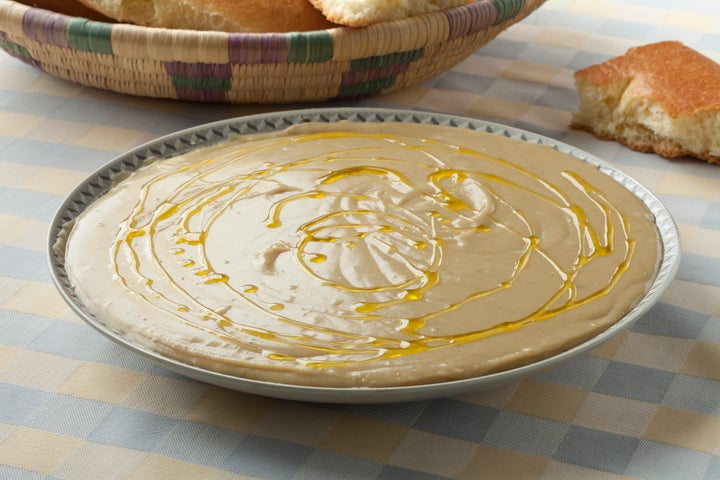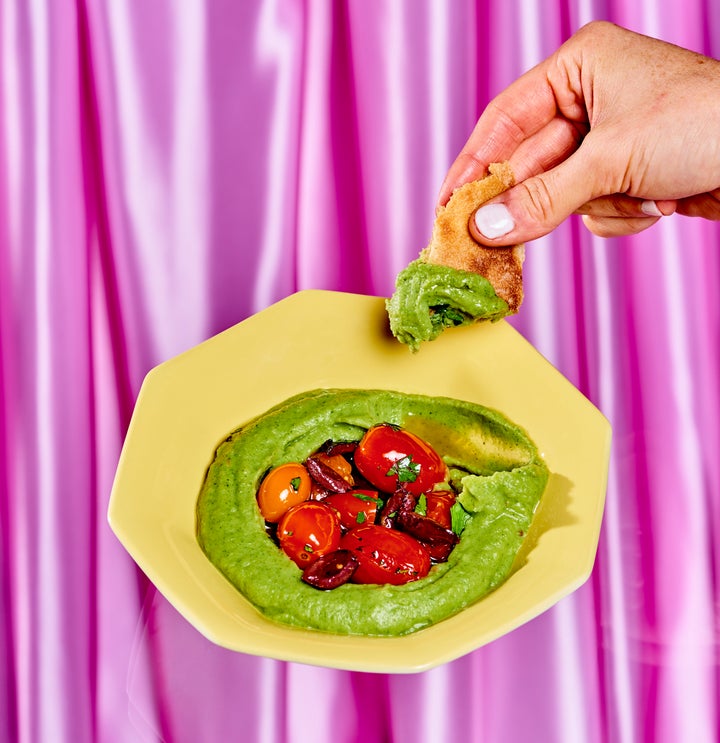I definitely consider myself more than an average fan of hummus. Dips in general are typically my go-to nosh option, whether I’m entertaining guests or snacking solo. But hummus in particular has always held a very special place in my heart.
Discovering unique incarnations of it and finding new twists on recipes to whip up at home are the stuff dreams are made of, in my book. Though my commitment to hummus may not extend as far as teeth-cleaning or hairstyling like Adam Sandler’s character in ”Don’t Mess With The Zohan,” my love of the creamy Middle Eastern spread definitely runs deep.
The silky texture, subtle nutty flavour and protein-packed nutritional profile are just a few qualities that have secured hummus a spot at the very top of my dip list. Its fibre-filled and potassium-rich nature (due to its chickpea base) further fuel my devotion. My staunch loyalty to hummus was never called into question until the Covid-19 lockdown and my subsequent need for extended power walks. That’s when I discovered bessara.

When I stumbled across Zooba ― a fast-casual Egyptian restaurant in Manhattan’s Nolita ― while taking a fresh-air walk in late May, I noticed a large poster in the window showing a neon green-hued dip with the words “NOT HUMMUS” written in large red letters above it. The description of something called bessara was printed underneath, and I immediately thought, “NOT HUMMUS? What does that mean? Why the need for such distinct disassociation, and why would you want to distance yourself from hummus in the first place, bessara?” This I had to try.
After promptly ordering and sampling the dish, which was served alongside an eerily familiar-looking flat bread (not called pitta, of course), my next thought was, “Wow.” Bessara was absolutely delicious and it was definitely not hummus.
Equally velvet-like but thinner in consistency, the taste of bessara is something altogether different from hummus. With a much more pronounced tang than its chickpea counterpart, bessara, which is made from fava beans, has an intriguing touch of bitterness that instantly awakens the taste buds the way a bite of pungent cheese would. There is also an undeniable pop of lemon and a punch of fresh herbs.
I was immediately hooked on the beautiful explosion of flavour and needed to know more about this addictive dip. After pressing the cashier, who referred me to the manager for further explanation, I learned that bessara is considered “classic Egyptian street food” and that in Cairo, where Zooba’s owners are originally from, as well as throughout North Africa, the dish is a popular appetiser at fast-casual restaurants, falafel spots and grill restaurants ― much like hummus, which is a staple at similar establishments across the Middle East, Europe and in the US.
Aside from its pureed fava bean foundation, the bessara variation on Zooba’s menu owes its signature bright-green tint to fresh coriander and parsley. The mild smoky aftertaste results from the infusion of cumin, and this contemporary take on a classic bessara recipe is made with dried fava beans as opposed to the customary fresh variety. Executive chef and co-founder Moustafa Elrefaey told me he decided to “revisit the traditional recipe with an updated flavour profile so that patrons wouldn’t have to reckon with the raw bean aftertaste.”
Elrefaey, who actually grew up enjoying generations-old family recipes for both hummus and bessara, said he “personally prefers bessara” not only because it’s native to his birthplace, but because he finds the dip “lighter and more flavourful.”
As a recent bessara convert myself, I agree wholeheartedly. But don’t take my word for it ― try Elrefaey’s recipe for yourself and taste the difference.

Bessara
Recipe from Moustafa Elrefaey
Ingredients
1 chopped onion
3 whole garlic cloves, peeled
2 cloves of garlic, minced
2 tablespoons corn oil
1 cup peeled fava beans
2 1/4 cups water
1 teaspoon ground coriander seeds
1 teaspoon ground cumin
2 teaspoons salt
3 tablespoons chopped parsley
3 tablespoons chopped coriander
Squeeze of fresh lemon juice
Fried onions (optional, for garnish)
Directions
1. Add water, fava beans, garlic cloves and onion to a stock pot and cook on medium heat until beans are fully cooked. Once beans begin to soften, add the salt and cumin.
2. Heat oil in a sauté pan on medium heat, then add minced garlic and coriander seeds. Toast until golden brown, then add the mixture to the stock pot.
3. Mix well, add the remaining herbs, then pour the mixture into a blender and puree until smooth.
4. Once cooled, top with a squeeze of fresh lemon juice, garnish with fried onions and serve warm.